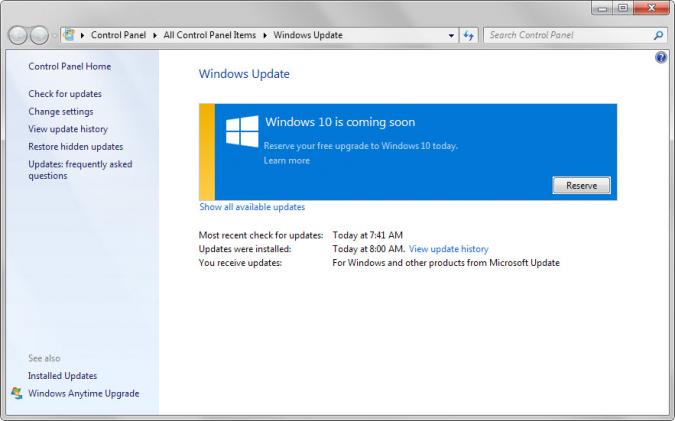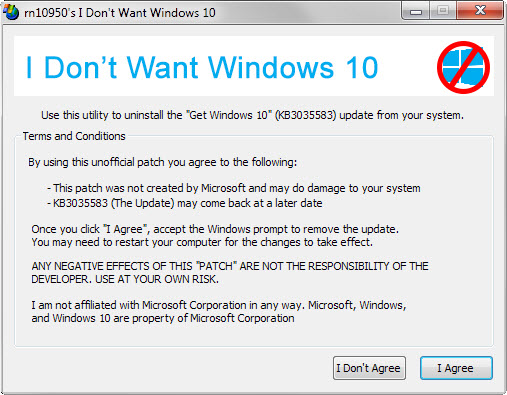“I don’t want Windows 10″ removes upgrade notifications from Windows 7 and 8
If you are running Windows 7 or Windows 8, you have probably come across Windows 10 upgrade notifications by now on the system.
While upgrade notifications for Microsoft's upcoming operating system Windows 10 are not displayed on all systems -- there is a fix for that -- it is almost certain that it is displayed on the majority of devices running previous versions of Windows.
The offer allows you to reserve the upgrade for the device to download the required installation files early so that the upgrade is available right on the day Windows 10 is officially released by Microsoft.
That's not something that all Windows users want. Some may want to wait and see how Windows 10 performs before they make a decision. Others may want to wait for the first big patch to hit the system to make sure that the majority of launch bugs are fixed before they upgrade.
And then there are users who don't want to upgrade their systems to Windows 10. There are plenty of reasons for that: maybe they want to keep on using features that Microsoft removed in Windows 10, dislike the mandatory update policy of Windows 10 Home, don't want to spend time upgrading to the new system and configuring it afterwards, or are not interested in the new features that Windows 10 offers.
No matter the reason, it makes the upgrade notification on the system an annoyance.

While you can block Windows 10 upgrade notifications manually by removing system updates and blocking them from being installed again, for instance by running WUSA /UNINSTALL /KB:3035583 on the command prompt, you may also use I don't want Windows 10 for that.
The simple tool removes the update from supported operating systems so that the notifications are not displayed anymore on systems it is executed on.
The program removes the patch KB3035583 from operating systems running Windows 7 or Windows 8.1. Since you can do the same manually, there is little need for that tool unless you prefer to use a click-once tool for the operation.

It is generally advised to perform the operation manually as you retain full control over the process this way. While the source of the tool is provided, you would need to audit it to make sure that it does the same thing and nothing else.
The author of the program plans to improve it in future releases, for instance by adding command line switches to it for automatic deployment.
Closing Words
If you want to get rid of the Windows 10 upgrade notification on a system running Windows 7 or Windows 8.1, then you may use the program for that. It's only advantage currently is that it requires two clicks to perform the operation.
This article was first seen on ComTek's "TekBits" Technology News

- Log in to post comments